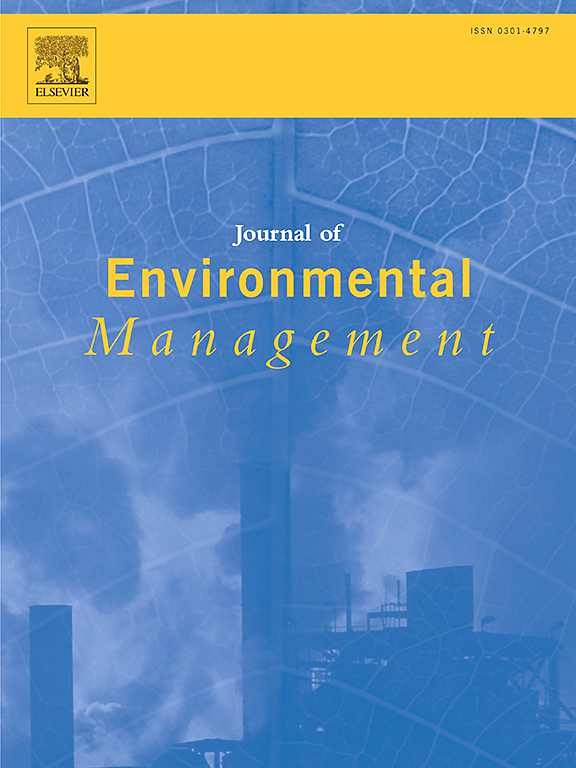Nutrient availability drives the ecological linkage between microbial functional diversity and soil organic matter molecular complexity during forest restoration
IF 8.4
2区 环境科学与生态学
Q1 ENVIRONMENTAL SCIENCES
引用次数: 0
Abstract
Forest restoration facilitates soil organic carbon (SOC) preservation, a process that is fundamentally governed by the molecular complexity of soil organic matter (SOMMC) and its dynamic interaction with microorganisms. Yet, the changes in SOMMC and its ecological linkages with microbial communities, and the mechanisms driving these relationships during forest restoration remain poorly understood. To fill this knowledge gap, we collected O- and A-horizon soil samples across two independent restoration chronosequences in tropical forests and applied thermally-assisted hydrolysis and methylation coupled with gas chromatography and mass spectrometry (THM-GC-MS) for molecular-level SOMMC characterization and high-throughput sequencing for microbial community profiling. The results showed that in the O-horizon, the SOC content was 32 ± 1 mg g−1 in the early restoration stage, which was 3.5 and 2.3 times of that in the middle and late restoration stages. However, SOC content exhibited a significant increasing trend in the A-horizon with forest restoration (P < 0.01). The α diversity of SOM molecules presented an increase with forest restoration in both the O- and A-horizons. Microbial functional diversity and biomass significantly explained over 50 % of the variances of the SOMMC and SOC content (P < 0.001), in contrast to microbial species diversity and community stability. In the O-horizon, the increase in microbial functional diversity and the decrease in biomass during forest restoration were associated with enhanced SOMMC but reduced SOC content. Conversely, in the A-horizon, increased microbial biomass and functional diversity, resulted in simultaneous increases in SOC content and SOMMC during forest restoration. The distinct ecological linkages between SOC preservation and microbial communities in the O- and A-horizons were attributed to the nutrient limitations for microorganisms. These findings underscore the role of forest restoration in enhancing SOMMC, highlight the necessity for improved nutrient availability to sustain microbial functional diversity, and facilitate SOC preservation in future forest management practices.

森林恢复过程中,养分有效性驱动微生物功能多样性与土壤有机质分子复杂性之间的生态联系
森林恢复促进了土壤有机碳(SOC)的保存,这一过程从根本上受土壤有机质(SOMMC)分子复杂性及其与微生物的动态相互作用的控制。然而,SOMMC的变化及其与微生物群落的生态联系,以及在森林恢复过程中驱动这些关系的机制仍然知之甚少。为了填补这一知识空白,我们收集了热带森林中两个独立恢复时间序列的O层和a层土壤样品,并应用热辅助水解和甲基化结合气相色谱和质谱(THM-GC-MS)进行分子水平的SOMMC表征和高通量测序进行微生物群落分析。结果表明:0层土壤有机碳含量在恢复初期为32±1 mg g−1,是恢复中期和后期的3.5倍和2.3倍;随着森林恢复,a层土壤有机碳含量呈显著增加趋势(P <;0.01)。在O-和a -层,SOM分子α多样性随森林恢复呈增加趋势。微生物功能多样性和生物量显著解释了超过50%的SOMMC和SOC含量差异(P <;0.001),而微生物物种多样性和群落稳定性则相反。在o层,森林恢复过程中微生物功能多样性的增加和生物量的减少与SOMMC的增加和SOC含量的降低有关。相反,在a层,微生物生物量和功能多样性的增加导致森林恢复过程中有机碳含量和SOMMC同时增加。O层和a层土壤有机碳保存与微生物群落之间存在明显的生态联系,这主要归因于微生物的营养限制。这些发现强调了森林恢复在提高SOMMC中的作用,强调了改善养分有效性以维持微生物功能多样性的必要性,并促进了未来森林管理实践中有机碳的保护。
本文章由计算机程序翻译,如有差异,请以英文原文为准。
求助全文
约1分钟内获得全文
求助全文
来源期刊

Journal of Environmental Management
环境科学-环境科学
CiteScore
13.70
自引率
5.70%
发文量
2477
审稿时长
84 days
期刊介绍:
The Journal of Environmental Management is a journal for the publication of peer reviewed, original research for all aspects of management and the managed use of the environment, both natural and man-made.Critical review articles are also welcome; submission of these is strongly encouraged.
 求助内容:
求助内容: 应助结果提醒方式:
应助结果提醒方式:


